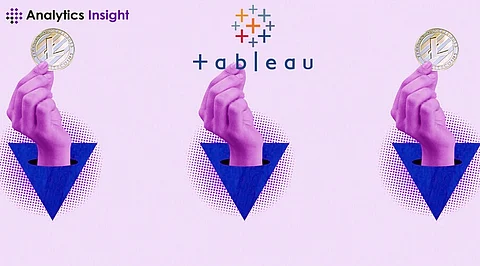
- Insights
- Cryptocurrencies
- Stocks
- White Papers
- Industry
- Geography
- Insights
- Cryptocurrencies
- Stocks
- White Papers
- Industry
- Geography


Cryptocurrencies, digital assets that function on decentralized networks, utilize cryptography to safeguard transactions and regulate the production of additional units. They've become increasingly popular as they present an alternative to conventional fiat currencies and payment methods. Bitcoin, Ethereum, Binance Coin, and XRP are among the most recognized cryptocurrencies.
Cryptocurrency exchanges are platforms that facilitate the buying, selling, and trading of cryptocurrencies for other cryptocurrencies or fiat currencies. These exchanges differ in their features, fees, security measures, liquidity, and the coins they support. Binance, Coinbase, Kraken, and Bitfinex are among the most widely used cryptocurrency exchanges.
Tableau, a powerful data visualization and analytics tool, allows users to create dynamic dashboards and reports from various data sources. Integration of Tableau with a Cryptocurrency Exchange, users can connect data from databases, files, online services, and APIs directly to Tableau. This integration enables the creation of dynamic and interactive visualizations using filters, parameters, and actions. Furthermore, Tableau can perform computations, transformations, and aggregations on the data. This integration of Tableau with a Cryptocurrency Exchange offers several benefits to customers who want to track and analyze the cryptocurrency market.
Tableau may obtain historical or real-time data on prices, volumes, market capitalization, and other parameters by establishing a connection with the API of a cryptocurrency exchange. Tableau offers a complete and comparative perspective of the market by integrating data from many cryptocurrency exchanges and other sources, like CoinMarketCap.
The data from a cryptocurrency exchange may be visualized using Tableau using a variety of graphs and charts, including line, bar, pie, candlestick, and map charts. Through the use of drill-downs, tooltips, highlights, filters, and parameters, Tableau may also allow users to interactively explore the data. In addition, Tableau can produce stories and dashboards that integrate several visuals and offer narratives and insights.
The data from a cryptocurrency exchange may be subjected to a variety of analyses using Tableau, including trend analysis, correlation analysis, outlier identification, clustering, forecasting, and more. Tableau's analytics pane, fast table calculations, level of detail expressions, and table calculations are just a few of the capabilities that may assist users in finding trends, anomalies, and opportunities within the data.
A cryptocurrency exchange's data and visuals may be published and shared via Tableau to a variety of platforms and users, including Tableau Public, Tableau Online, Tableau Server, and Tableau Reader. Tableau offers capabilities like comments, annotations, subscriptions, and alerts that facilitate group collaboration and communication.
In conclusion, customers who wish to track and evaluate the Bitcoin market may benefit from several integrations between Tableau and cryptocurrency exchanges. Tableau may provide data access and integration from multiple sources, flexible data visualization and exploration, data analysis, and insight discovery, and collaborative sharing and sharing across people. Additionally, Tableau can assist customers in making data-driven, well-informed judgments in the erratic and dynamic Bitcoin market.
